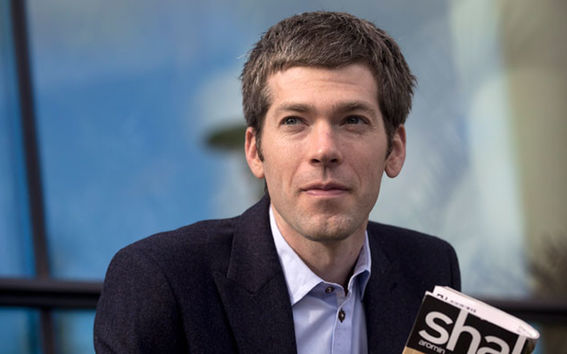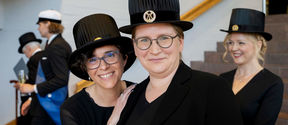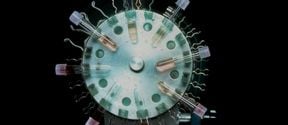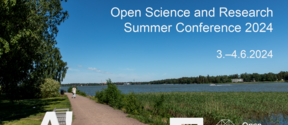Stiff and strong yet light

Luc St-Pierre is intrigued by the mechanics of materials; how materials deform and break under stress.
‘In my research, I focus on lattice materials: these are grid-like and cellular structures. I am particularly interested in how the shape of the lattice affects its mechanical properties.’
St-Pierre and his colleagues aim to design and manufacture structures that are stiff, strong and light. These structures can also absorb a significant amount of energy, which makes them ideal for applications prone to collisions and impacts.
The lattice materials vary in scale; the cell size can vary from micrometres to a few centimetres.
These kinds of structures are common in nature: plants, trees and bones have evolved a lattice microstructure to maximise their mechanical properties.
‘The lattices found in nature have good performances, but nature is limited in the choice of parent material available. We can manufacture lattices out of any materials, for example, metals and ceramics, and this flexibility enables us to cover a very wide range of properties.’
St-Pierre considers these lattices as materials of their own, a sort of continuum in the development of materials.
‘Previously, new materials were developed by manipulating chemistry, simply by mixing different atoms together. This approach has been exploited systematically and leaves little room for further improvements. But what is exciting with lattices is that they give us the opportunity to create new materials by design: we can manipulate their microstructure to achieve unique combinations of properties.’
With their wide range of mechanical properties, lattice materials can be beneficial in multiple applications including aviation and space technology, construction engineering, shipbuilding and orthopaedics.
Spaghetti breaks
St-Pierre started his work as Assistant Professor at the Department of Mechanical Engineering in August 2016. He will start teaching fracture mechanics in the Mechanical Engineering master's degree programme during the next academic year. He promises to demonstrate theory with interesting practical examples.
‘Fracture mechanics is an exciting topic because it addresses how stuff breaks, and it is very easy to find examples of failure in our everyday life.’
Paper, dried spaghetti and ice hockey sticks are all fine demonstrative instruments.
‘Examples are helpful for the students to remember the theory and demonstrate how it can be applied in practice.’
St-Pierre points out that solid mechanics is present in our everyday lives. Everything we see around us is made of a material, and this material can break.
‘These days, we use more and more electronic appliances, but that doesn’t mean that solid mechanics is less relevant. These electronic components are subjected to heat, impacts and they can break like any other material. To prevent these from failing, we need to apply the principles of solid mechanics.’
Materials with 3D printing
As St-Pierre was born in Canada, he adapted to the Finnish conditions quickly.
‘The climate and people’s mentality are similar in Finland and Canada. The Nordic countries feel like a second home to me.’
St-Pierre got to know Europe when he had a student exchange in Paris in the early 21st century. He came to Finland from England where he completed his PhD and worked as a researcher for nearly a decade.
‘Aalto University was looking for a person with expertise in solid mechanics and I saw this as a good opportunity to extend my research. I was also attracted by the exceptional facilities for 3D printing. It is one of the key technologies enabling us to manufacture complex lattice structures.’
At Aalto University, St-Pierre got involved in a research community in which lattice materials and sandwich structures are studied intensively, especially in shipbuilding.
If St-Pierre is lucky, we will have the opportunity to meet him on skates; he is looking for a team that he could play ice hockey with. It is only natural, as he comes from the mighty ice hockey city, Montreal.
Contact information:
Assistant Professor Luc St-Pierre, [email protected]
- Published:
- Updated:
Read more news

Doctoral education pilot arouses wide interest among applicants and corporate partners
The doctoral education pilot has got off to a fast start.
Robotics needs safe behavior patterns
Robotics and autonomous systems are developing rapidly. Algorithms that withstand disturbances and uncertainties in the system model and environment are critical for development.
A new way to do controlled experiments in medicine: simulate the control
Generative AI could augment randomized controlled trials.